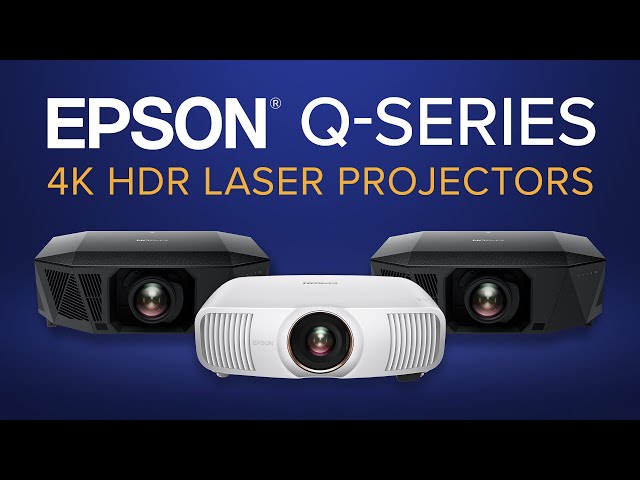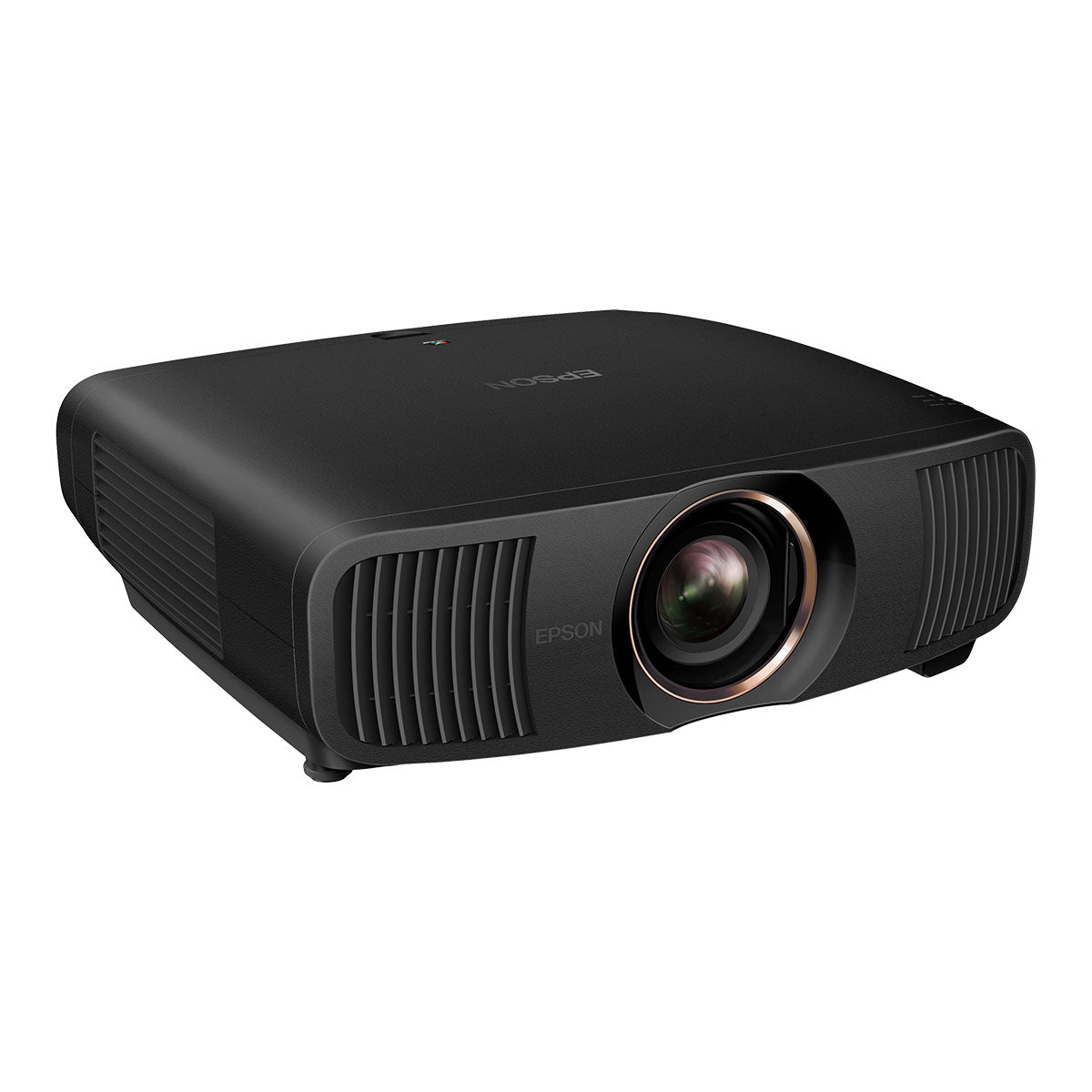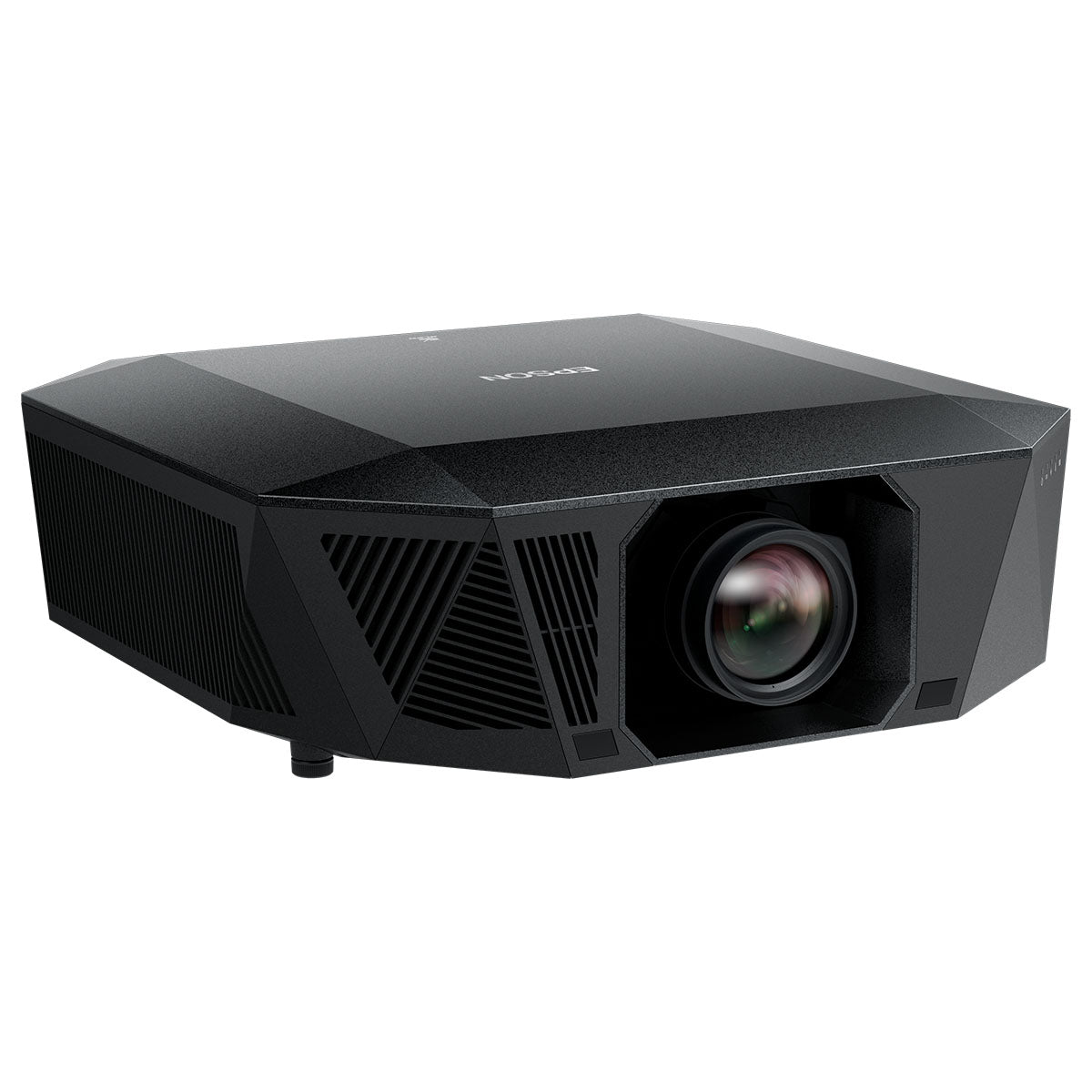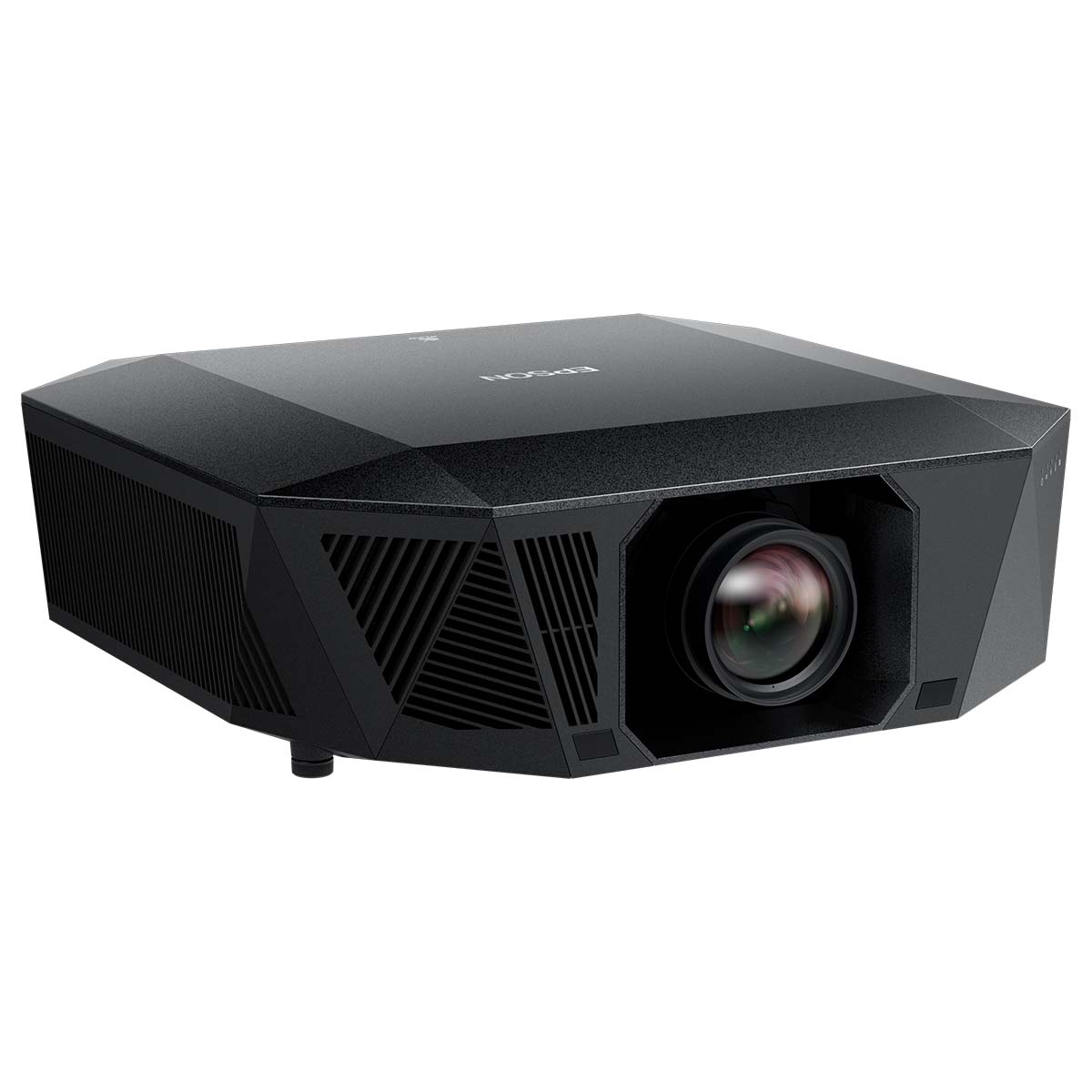
In this article, we are going to look at three exciting Epson front projectors for home theater systems and high-performance entertainment rooms. These are the QB1000, QL3000, and QL7000.
You’ve probably heard the name Epson, as they are well known for their high-quality printers. Epson is a huge Japanese multinational company, but it came from humble beginnings in 1942 when it started out in a small warehouse with just 22 employees in Japan, making parts for watches. Over the decades, they have ventured into many aspects of consumer electronics. Their growth has enabled them to have some very serious manufacturing facilities, which they leverage to offer very high-value products.
In the front projection world, Epson has always been considered one of the very best values out there, as their projectors start at lower prices than other well-established brands. At Audio Advice, we have always felt they offered a whole lot of bang for the buck, which once again is certainly the case with their three new models.
For the last several years, Epson has had very bright projectors aimed at the commercial presentation space. They had very high light output, but the picture performance was geared more toward commercial presentations and not home theater. We have been asking them for years to utilize their expertise in creating super-bright commercial presentation projectors and develop a serious home theater projector that offers a very bright image along with excellent picture quality.
We are pleased to say that these three front projectors fulfill our wish and will enable people to create a more affordable home theater with a huge, wall-to-wall image. They also open up a new market for family rooms with drop-down screens, allowing you to achieve a great image even in rooms with a lot of light.

So, how did they pull this off? It all started with their LS12000, which came out in 2022. In the past, Epson had used a shift to try to reproduce a 4K image. The catch was that, up until the LS12000, they had a single-axis shift plate, so if you put up a 4K test pattern, you really were not getting full 4K resolution. For the LS12000, they introduced a dual-axis shift plate, which meant that when you throw up a 4K test pattern, it is shown at 4K resolution. Now, the 3LCD chips are still not true 4K, but this new system is extremely close, and at a normal viewing distance, you’ll be hard pressed to see the difference.
They also found a way to make their lasers more compact and efficient. Plus, they are mounting them to a new vapor chamber heat sink. All of this tech enabled them to create three new laser-based projectors that are compact, affordable, and output tremendous light levels. The QB1000 is currently priced at $7,999 and produces 3,300 lumens. The QL3000 is currently just above $15,000 and puts out 6,000 lumens, while the top-of-the-line QL7000 is sitting just above $30,000 and can produce an incredible 10,000 lumens! We should point out that you will need a lens with the QL models, which will typically add about 2K to the price. But still, compared to other options on the market, these are simply astounding light output levels for their selling price and especially their compact size.

Epson QB1000 4K HDR 3,300 Lumen 3LCD Laser Projector
$7,999.00

Epson QL3000 4K HDR High-Lumen 3LCD Laser Projector
$15,999.00

Epson QL7000 4K HDR High-Lumen 3LCD Laser Projector
$32,999.00
Another thing Epson upgraded in the new models is the video processor. They now use their 32-bit QZX processor. This processor improved noise reduction, smoothness, and reduced color banding in dark scenes compared to its previous processor. But the big deal is they now have dynamic tone mapping. We have gone over this a few times in other videos, but dynamic tone mapping is the key to a front projection system producing a great HDR image.
HDR, which stands for high dynamic range, came out to offer more lifelike images. The catch is, it was designed for very bright TVs and needs anywhere from 1000 to 10,000 nits of light output for the image. The HDR content gives one brightness spec to the TV or projector for the entire film instead of a different one for each scene. As a result, the first front projectors with HDR looked very dark in some darker HDR scenes. Dynamic tone mapping lets the projector adjust for each scene on the fly, which gives a far better result. These are the first projectors from Epson to have Dynamic Tone Mapping. Plus, their new QZX processor also opened up the option for dynamic gamma contrast for SDR content, and combined with the better laser engine, it’s doubled the dynamic contrast spec on these compared to the LS12000 with a 5,000,000:1 spec now.
In addition, each model has ten lens memories, making it super easy to get the full widescreen experience. To learn more about widescreen, check out the link for an entire article we did on the subject.
Now, if some of this sounds like it's getting too technical and all you want is a great home theater projector system, have no worries. At Audio Advice, we have a very passionate staff who live and breathe home theater and are here to help you make the best choice for your needs and budget. Plus, we have our free world-class home theater tool where you can design your room and drop in many different projectors to see the light level they will give you on the screen size you’ve picked out. The tool can even help you find the best screen size and the height at which you should mount it based on your seating layout.
All of these models share the advanced technology we have just covered. Another great thing is they all have a 3-year parts and labor warranty, and all three are made at Epson's plant in Japan.

To our eyes, the recent Epson projectors have always produced an image that is lifelike and extremely pleasing for their comparatively low cost. The QB1000 is getting into a much higher price range, but now that it has the better processor, dynamic tone mapping, and 3300 lumens, that puts it far below the competition in terms of price. For those of you wanting a very large screen with enough light output for a great picture, it lets you get there for a whole lot less.
But what really piqued our interest in these models was the QL3000 and QL7000. These are still in a relatively small package and have a larger imager than the QB1000. While the processing is identical, if you put the QL3000 on the same-sized screen as the QB1000 and calibrate the light levels to be the same, the QL has a smoother, more lifelike appearance.
When we saw the lumen specs and the low price for those levels, we got really excited thinking about all the possible places these might go. We’ve been involved in countless home theater designs where the client wanted as big a screen as their room would handle, but had to back down in size when they realized how much they would have to spend on a projector to get an acceptable brightness level on the screen. The QL3000 and QL7000 totally change that equation. Sure, at 15K or 30K plus a lens, they are not exactly inexpensive, but their price is far less than the 60K plus you would previously need to budget for this much light output with a great picture. Now, for those people who want a 200” screen or even bigger, the QL7000 can help make their dreams a reality.
When designing a home theater or entertainment room, we always run into the question of where the best location is for the projector. Almost all projectors come with the lens pre-mounted, and that lens has a specification to tell you where the projector can be placed based on the screen size. You can play around with this on our home theater tool. This distance gets really tight if we are using lens memory for both 16:9 and 2.40 widescreen. There is nothing wrong with this; it's just a function of the specific lens on the projector we are trying to fit in. Well, the QL3000 and QL7000 take that off the table. There are 10, yes 10 lens options for these models that let you choose a throw distance from anywhere between .34 times the width of the screen for rear projection or ultra short throw, up to 7.16 times the screen width if the projector needs to be very far away. For all lenses in the normal range of throw, the price is around $2,000, give or take a few hundred dollars.
Another cool aspect of this is that the ranges overlap a little bit on the models. We have found during testing in our projector lab that projectors have more light output when they are at the shortest range of their throw distance. The light output can drop as much as 48% at the longer end of the throw. This is because the lens aperture is wide open at the short end and closes down more at the longer end. But we had an aha! moment when we realized you could find the ideal spot where you physically wanted your projector, then match up the lens where the zoom could be set to the short end of the throw range. Now that really got us excited!

In our projector lab, we had the chance to test each of these models hands-on, and the performance across the board really impressed us. Starting with the QB1000, we were surprised at just how much image quality you get for the price. It delivered a bright, sharp, and well-balanced image, even in a room with some ambient light. We ran it through sports, animated content, and some darker movie scenes, and it consistently delivered a picture that was vibrant and cinematic without feeling over-processed.
As we stepped up to the QL7000, that’s where things really clicked. With a 10,000-lumen rating, it produced one of the brightest images we’ve ever seen in this price range. We tested it in a room with the lights on and the blinds open, and it still delivered bold colors, deep contrast, and crisp detail without washing out. It handled everything we threw at it with ease — from fast-paced sports to visually intense action films.
When we put on Top Gun: Maverick, the experience was incredible. The aerial dogfights had a razor-sharp look with smooth motion and realistic lighting. Even darker moments, like the night mission briefing, retained plenty of detail and depth. The QL7000 gave us an image that felt truly cinematic, and it did it in a less-than-ideal lighting environment.
If you have dreamed of a 200” or even bigger screen, the price of entry for a great picture just dropped tremendously. And we can’t emphasize enough how much fun a huge, bright, high-quality image will be for your friends and family!
The other part about the far lower price on all three of these models is the fact that it may leave room in your budget for a much better video processor like the MadVR Envy Core. MadVR enhances our favorite processors, taking HDR to an entirely new level. They offer a wealth of features, including automatic screen size adjustment, subtitle control, and more. Their new Core is under $6,000 as of this article, and when you pair it with any of these three, you are still far below the typical cost for that amount of lumens from other brands, even without the Core. You can read more about MadVR here.
We are thrilled to see Epson finally address the high-lumen market with some incredible projectors that lower the bar for entry into very large home theater screens and entertainment rooms. These have an awesome picture with excellent brightness, impressive flexibility, and strong processing that rivals far more expensive models. Whether you're building a dedicated theater or upgrading a media room, the Q Series offers a new level of performance and value that’s hard to beat.
If you have further questions, contact our experts via chat, phone, or email. Or simply visit one of our world-class showrooms to experience speakers, projectors, TVs, and everything in between for yourself before you make a purchase!
If you’re planning your home theater or media room, check out our Home Theater Design page, where we have everything Home Theater related, including our FREE Home Theater Design Tool.
When you buy from Audio Advice, you’re buying from a trusted seller since 1978. We offer*** Free Shipping***, Lifetime Expert Support, and our Price Guarantee. We look forward to serving you!
You'll be among the first to know about product launches, exclusive online deals, and the hottest audio trends.
